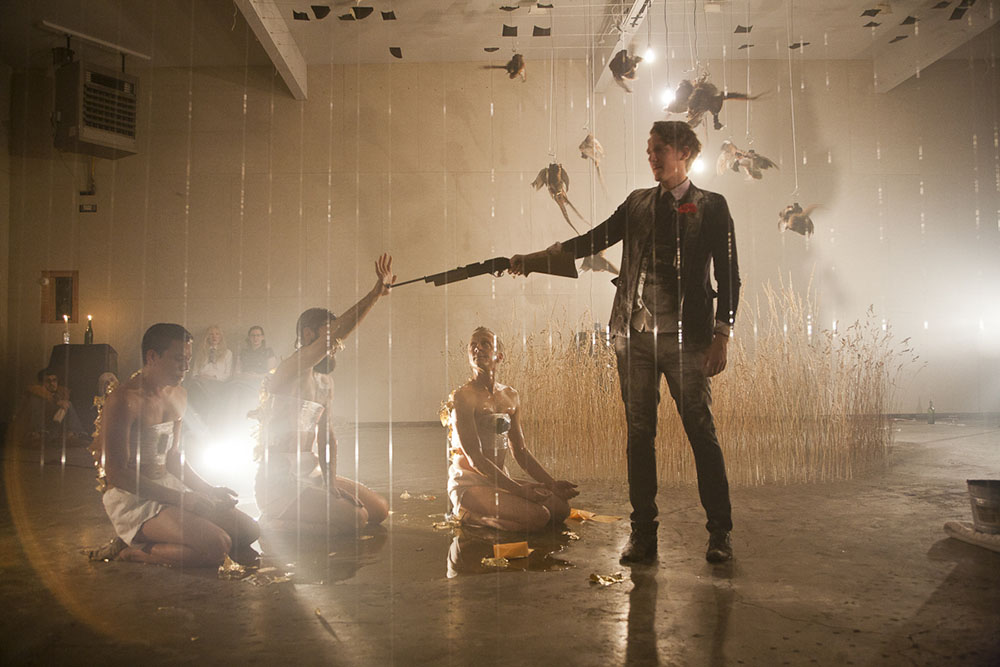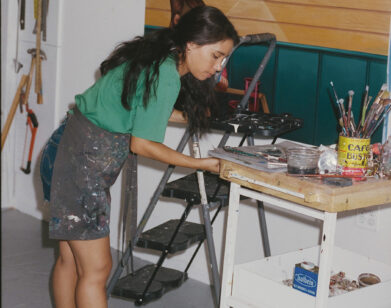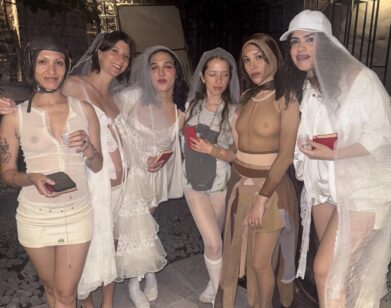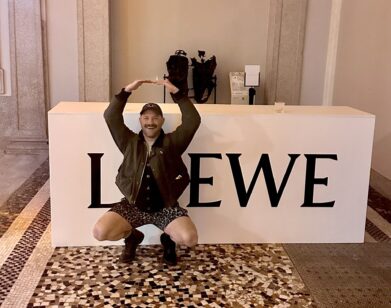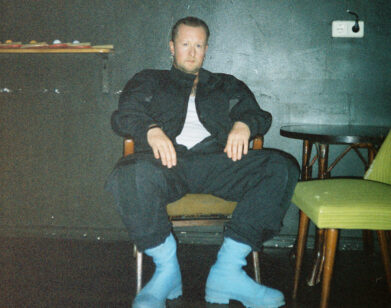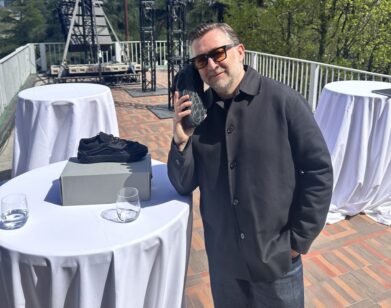Flowers for Saint Genet
French author and playwright Jean Genet opened his 1949 novel A Thief’s Journal with the assertion that “there is a close relationship between flowers and convicts,” comparing the fragility of the former with the brutality of the latter. Fittingly, when the Seattle-based, avant-garde performance company Saint Genet reinterpreted the trials of Charles Manson as part of their performance Transports of Delirium at The Lawrimore Project in Seattle last September, a mound of flowers—blood red carnations, dazzling white lilies, and wild daisies—was placed onstage.
This transgressive approach to beauty is used to staggering effect throughout the work of Saint Genet. Despite changing their name from Implied Violence (formed in 2003) following the departure of one of their creative directors in early 2010, they have continued to work in a style that mixes a broad range of physical, sonic, and aesthetic components such as ballet, archery, ecstatic fits, Shaker hymns, sculptures of dripping wax, couture-grade gowns, nudity, modern dance, video, and ritual blood-letting with medical leeches. Sometimes lovely as gold, yet carnal as pornography—this marriage of themes and media is not always an intrinsically pleasurable experience for the audience or performer. Inspired by the dramaturgy of Bertolt Brecht, and Antonin Artaud’s Theater of Cruelty, physical exhaustion and heightened mental states bordering on hysteria are as integral parts of the work as the experience of empathy, horror, or curiosity evoked from the audience. Unlike the fabricated narrative of traditional theater—these are real phenomena explored in a theatrical mode.
Saint Genet will tour a new work, Paradisiacal Rites, this spring at On the Boards Theater in Seattle and will return to the Donau Arts Festival in Austria, where they performed as Implied Violence in 2010. Interview spoke with company director Ryan Mitchell to discuss the past, present, and future of Saint Genet.
RYANN DONNELLY: How has your work changed over the last ten years?
RYAN MITCHELL: I began with an initial interest in the structure of performance, and exploring and expanding the moment of theatrical climax. This is something that I am still very interested in. While I was a resident at Robert Wilson’s Watermill Center, a major exploration was centered around the idea of “iris in”—letting the macrocosm slowly shift, until the audience is focused on the microcosm.
The work now is similar in that it is still a combination of dance, theater, and body-based performance. I would like to think that I have a little more control and vision when making the work, but I often fight against those feelings, because I fear the work becoming too stable, and, honestly, too satisfying for the people who are on stage. Looking back at some of our work that now seems seminal, I felt really really bad when I was done performing them, or having other people perform them. It is only after the fact that I can consider those works very special, or good. It takes time to process.
DONNELLY: How did you become involved with Robert Wilson?
MITCHELL: In 2008, we were awarded Robert Wilson’s Watermill Residency. While there, I threw out the idea of our proposed project, and created a large scale piece that was both very personal, and inspired by the dramaturgy that we were able to do at Watermill. The subsequent creation became the four-part series titled The Dorothy K. The pieces of The Dorothy K ended up being performed in New York, Austria, Seattle, and was concluded when Robert Wilson curated the final piece at The Guggenheim in New York for the Works and Process Series. The moment of finishing the pieces with the man that inspired much of the generative work was very special for me, and completed both a dramatic and real narrative all at once.
DONNELLY: What are you working on for 2013?
MITCHELL: The show is called Paradisiacal Rites. It is the realization and completion of the “Aesthetic Declarations” from a work that references the Charles Manson trials—Transports of Delirium: Aesthetic Ascesis in 4 Acts. These Aesthetic Declarations showcased elements of ballet, symphony, installation, modern dance, ritual, site-specific installation, and experimental theatrical performance.
I continue to explore source material that includes the Manson Trials, the final moments in Jonestown Guyana, music from The People’s Temple Choir, the Oscars, perceptions of mental illness, elastic moral codes, as well as the poetic idea of Jean Genet’s negative ascension to the realm of “The Saint” as described in Sartre’s book, Saint Genet. The piece will include three major installations: a large gold kinetic wall, a wheat field with specific sections of brass wheat that move from a hidden motor, and two large reflective pools of honey and blood, revealing people hidden in couture costume pieces made entirely of flowers.
DONNELLY: You have worked with the same people for quite some time. What is important to you about retaining the same performers in your work?
MITCHELL: For me, I get very very obsessed with people. I come from an extremely dysfunctional and broken family, and working with the same people over and over again is a way form me to maintain relationships through the most important lens I have—making performance, theater and dance. I also really love the idea that people that I see who are not necessarily actors or dancers have become the most interesting part of the work. Something that is wrong with “traditional” forms of theater and dance is that they are very classist. So, when I am putting obese friends I have known since childhood, or bike messengers, or carpenters on stage it is an act of transgression. It creates a secret and coded language on stage that can only come from having very, very intimate relationships with the people you work with, and true investment in both the work and the people at large.
DONNELLY: What aspects of Jean Genet’s work do you connect to your own?
MITCHELL: Everything that has to do with hate, and lying, and stealing, and gambling, and getting fucked over. So there is that…

